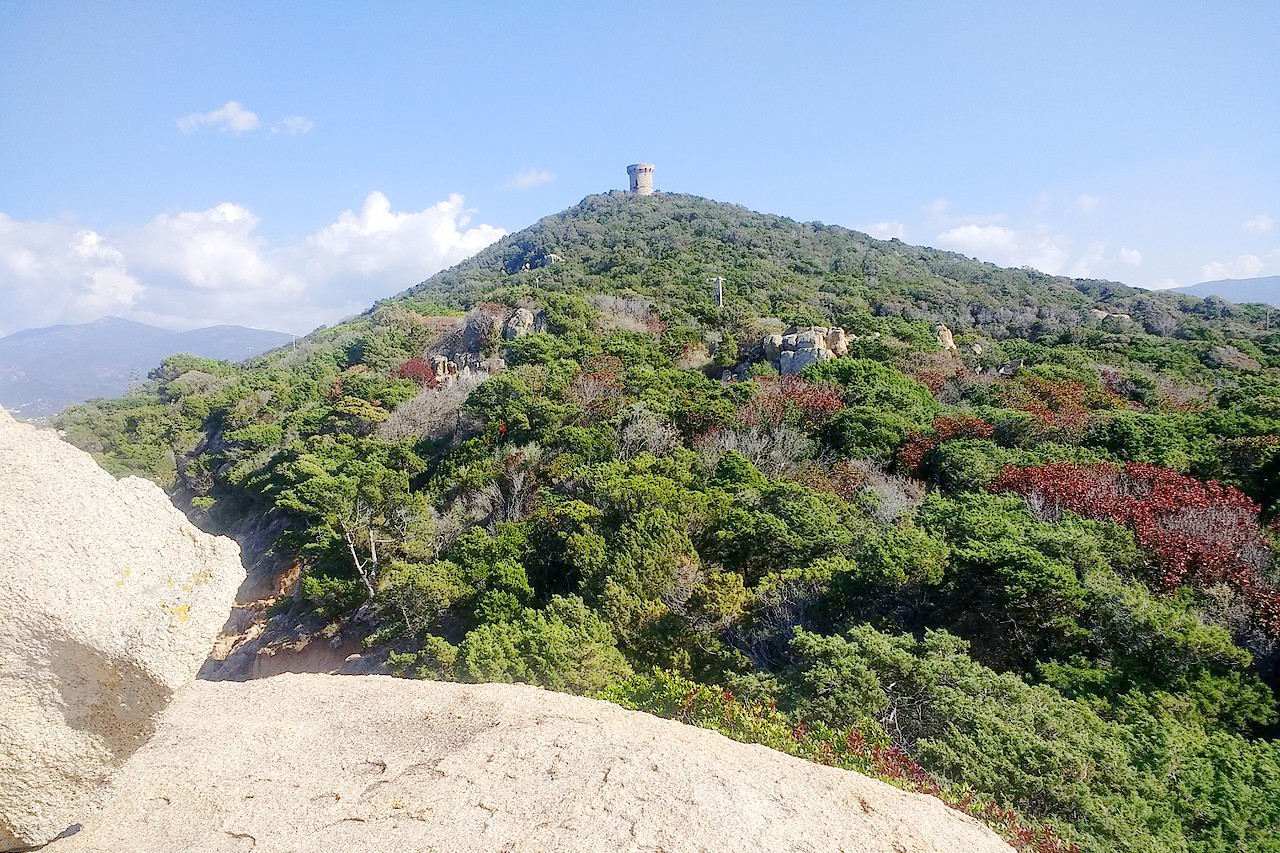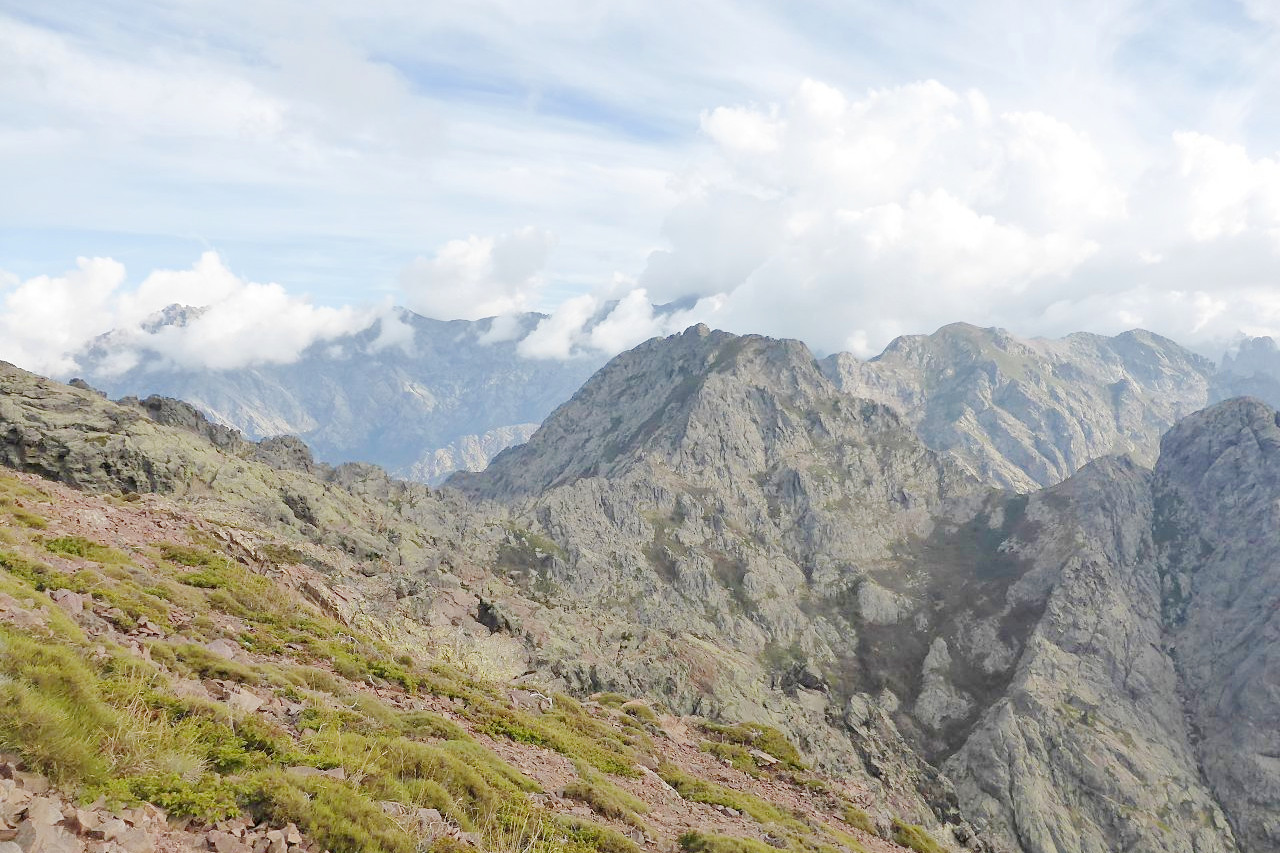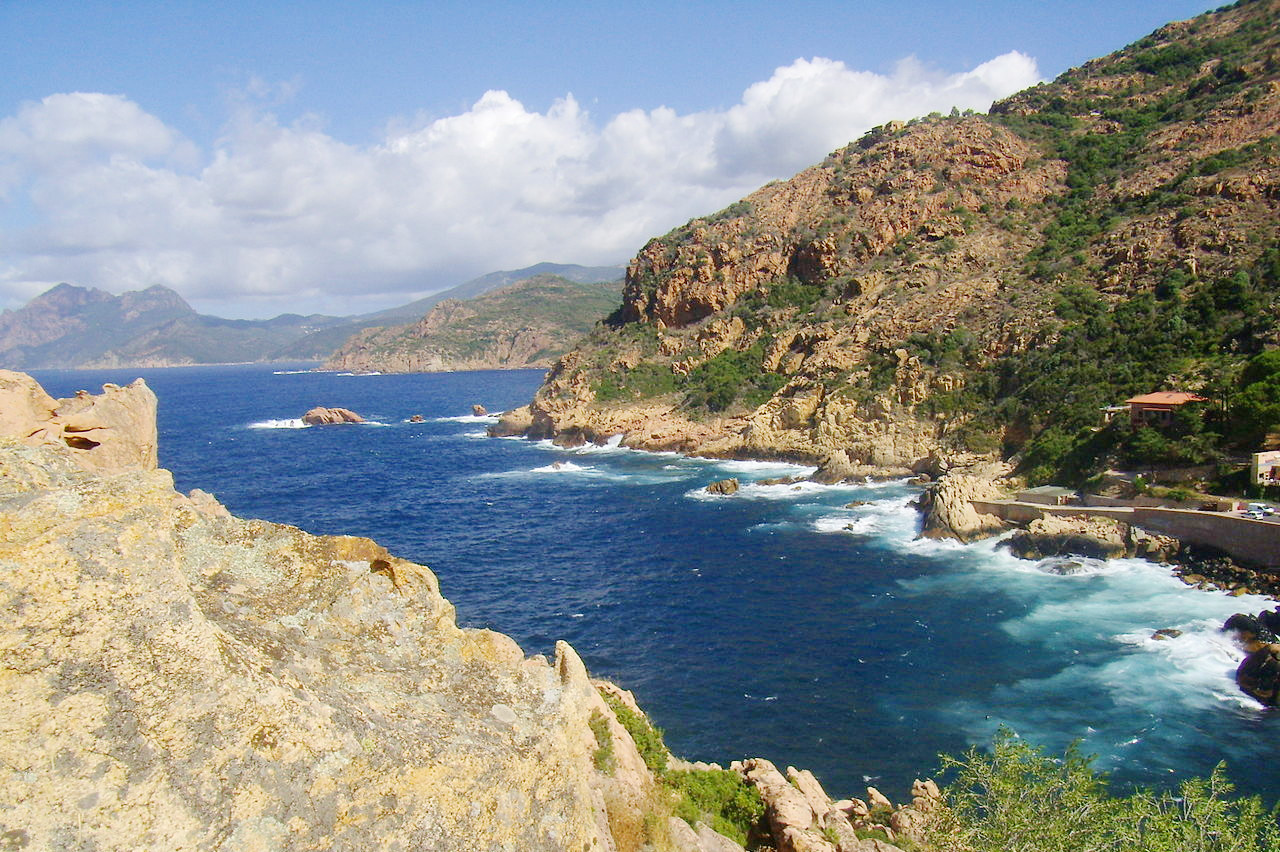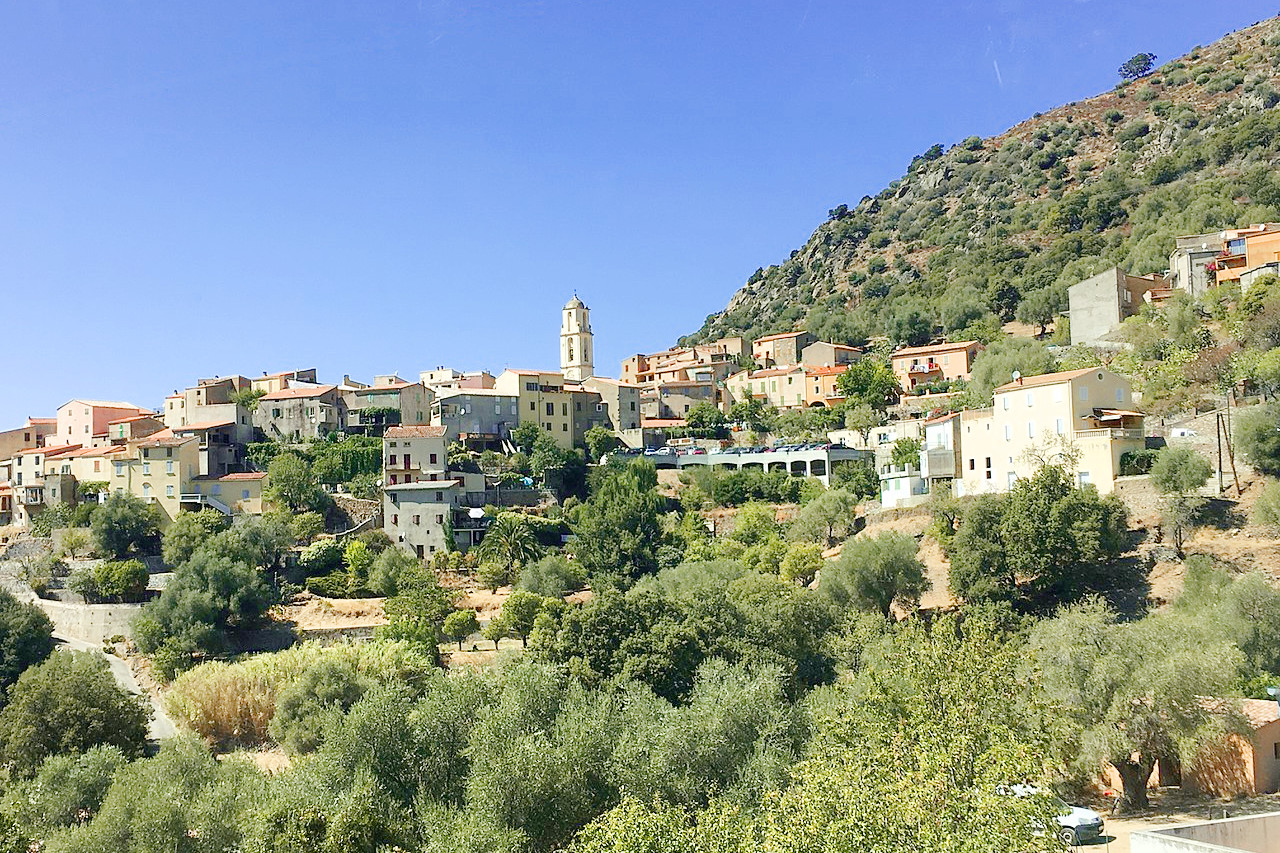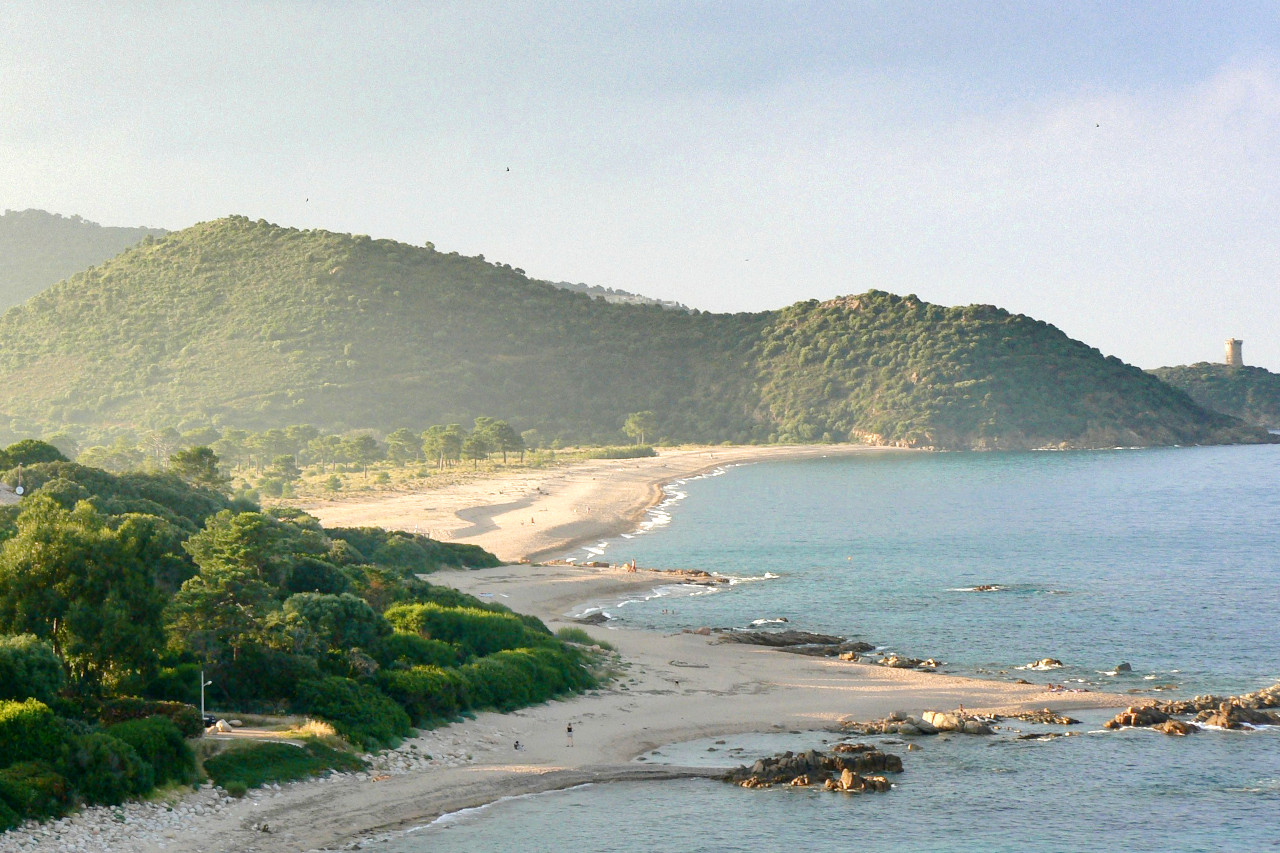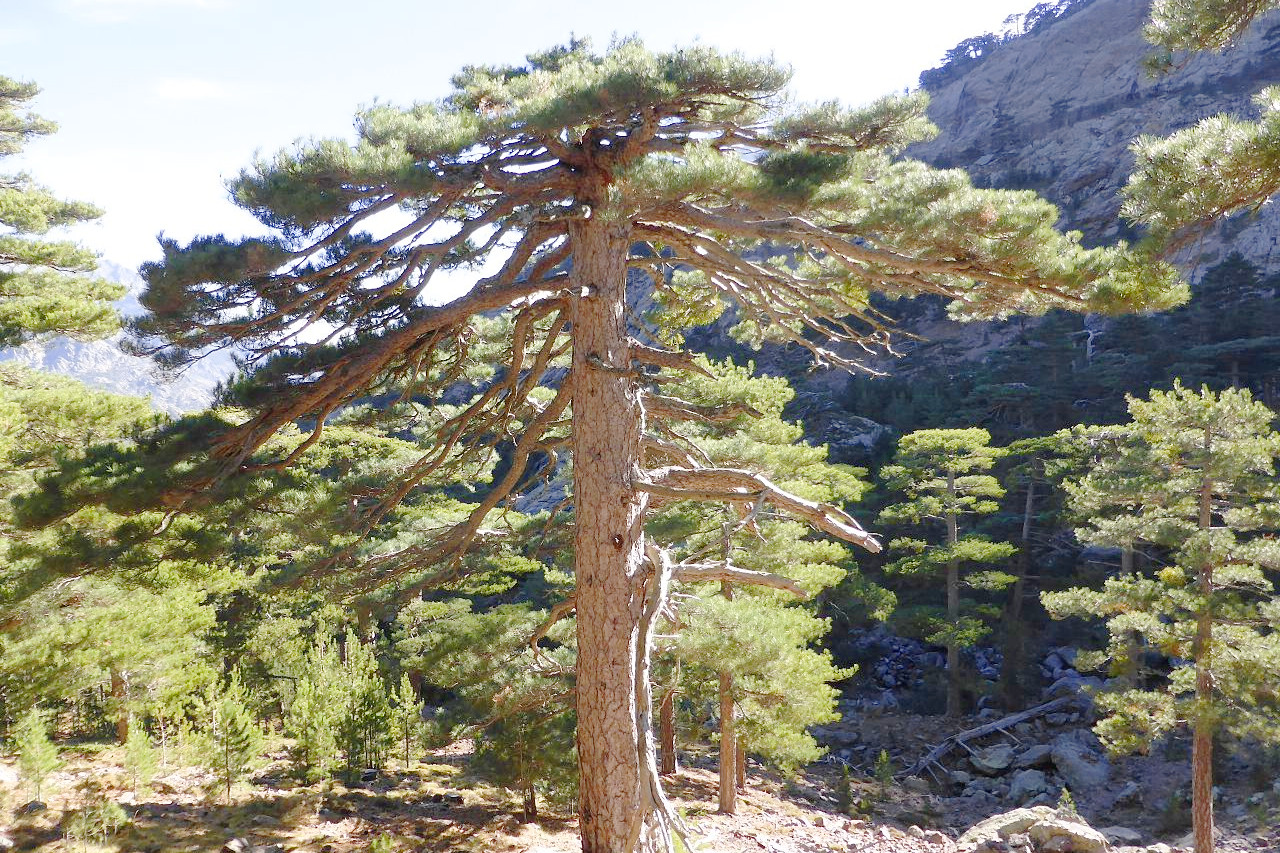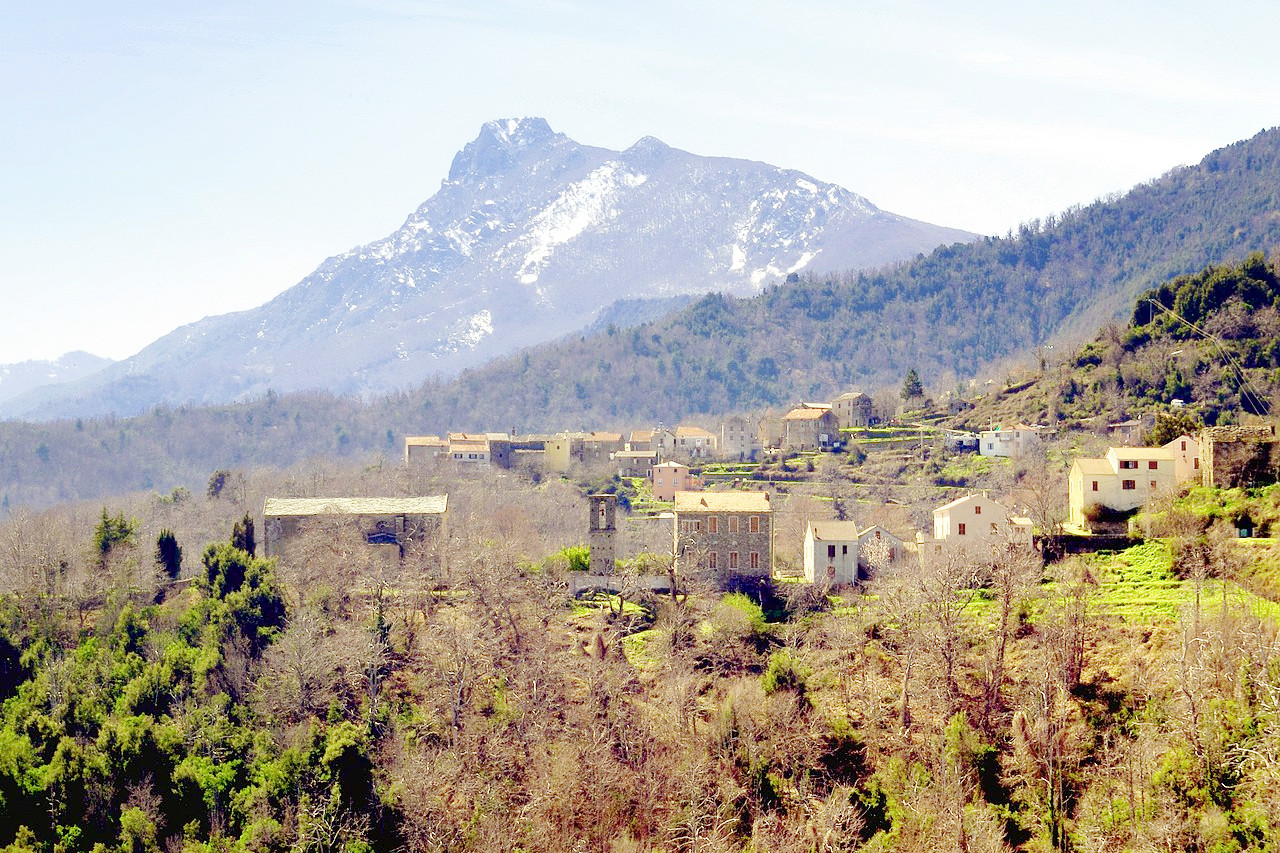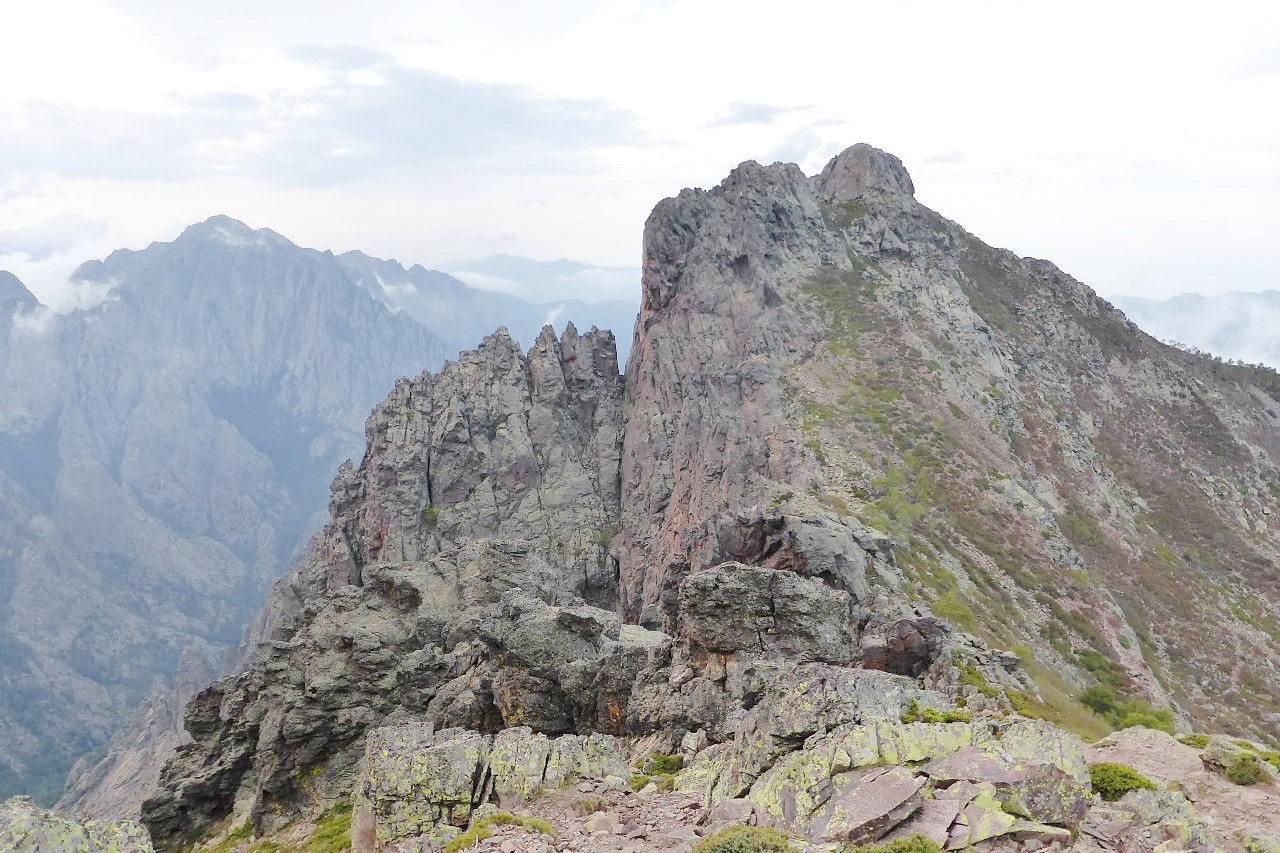The Geography of
Corsica
Why visit Corsica?
Corsica is one of the loveliest of the Mediterranean islands. It is a country of sweet-scented plants—thyme, rosemary, honeysuckle and many others—of the well-nigh impenetrable thickets of the maquis; of high mountains, rising to the 2,700 meter (9,000 foot) summit of Monte Cinto; of ancient fortress towns like Calvi, Corte and Bonifacio. People come to Corsica to taste the charm of its soft airs and enjoy the beauty of its landscapes, its rugged red mountains, and its blue gulfs.
Contents
Map
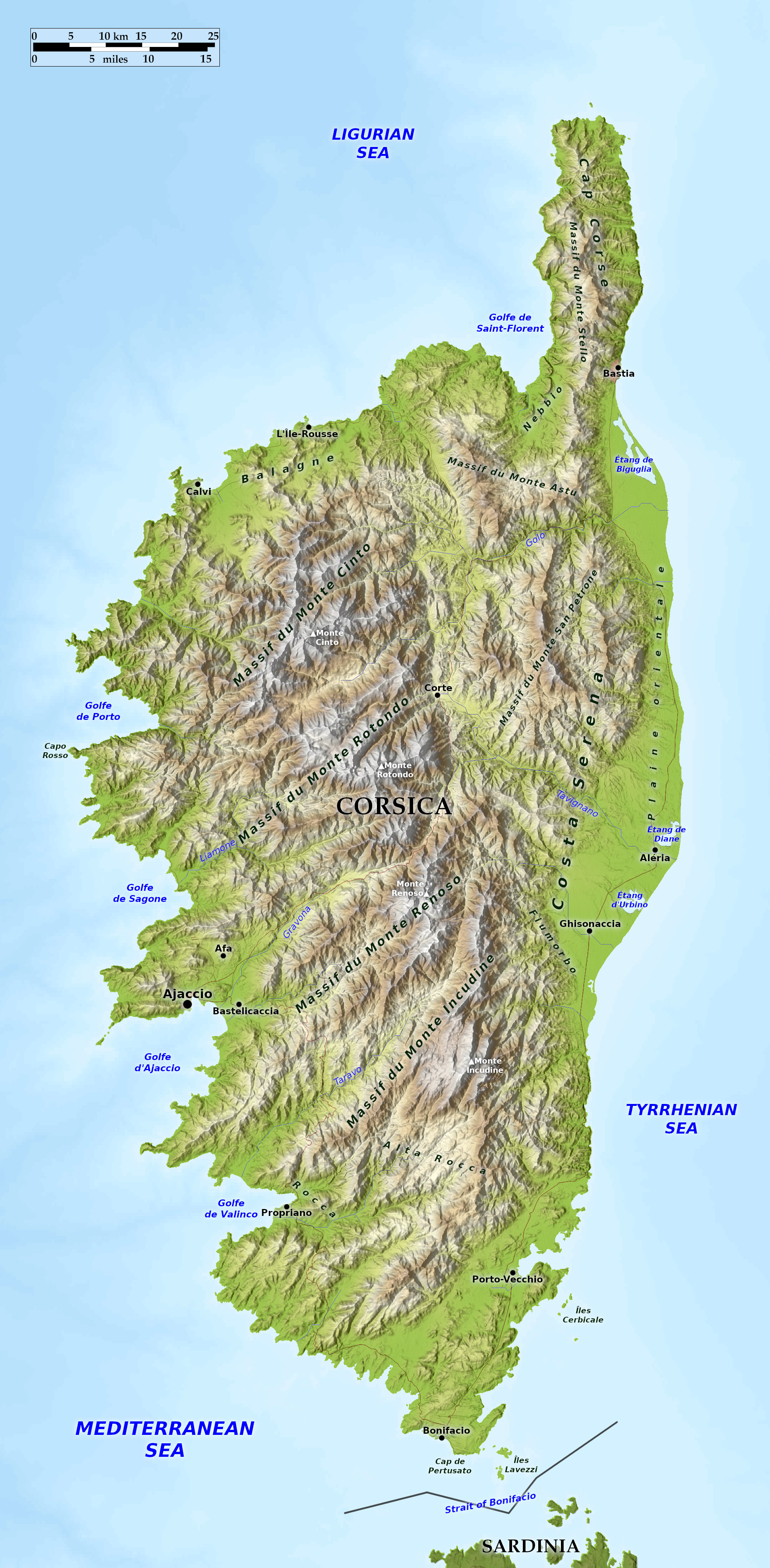 Relief map of Corsica
Relief map of Corsica
What is the landscape of Corsica like?
Corsica appears from every point of view something like an ocean of granite, a mass of rock-waves. High up on the crests of some of the granite billows small villages can be seen, themselves resembling a clusters of rocks more than anything else.
There is one principal mountain-chain running round from north to south, but rather nearer the west coast than the east, so that it divides the island into two unequal parts. From the central chain numerous small ranges run more or less directly to the sea. On the west, north, and south, these chains end in capes, but in the east they form a series of terraces. Between the watersheds are hundreds of little streams and rivers. Each valley forms, as it were, a little world in itself.
On the east coast there is a long stretch of low-lying land between the mountains and the sea. The eastern plain is broken here and there by a number of lagoons or shallow lakes, separated from the sea by long narrow sand-banks. In the spring the plain is exceedingly beautiful, and decked with flowers. The sharp piece projecting from the north of Corsica is the Cap. It is only from eight to ten miles wide. Through it runs a range of mountains between 3,000 and 4,000 feet high, which lies nearer the west coast than the east, and has short narrow valleys running down to the eastern coast.
The western half of Corsica is a paradise for the visitor who wants to travel off the beaten track. You can travel all round the island, from Ajaccio, the capital and birthplace of Napoleon, to Bonifacio, perched on a great over-hanging cliff and one of the most medieval towns in all Europe, and then along the east coast to Bastia and round Cap Corse, coming back to Ajaccio by way of Calvi and the fjord-like Gulf of Porto. We cannot speak too highly of Corsica, its charms and interest. Although the island is hot in summer, the heat is tempered by sea breezes. During the winter and spring months, conditions are ideal.
What is the nature of Corsica like?
Corsica is a large Mediterranean island, and is almost wholly mountainous. It has only one narrow lowland plain along its eastern shore. Two-thirds of the island, including all the west and south, is a wilderness of great jagged mountains, some of which attain 9,000 feet in height. The inhabitants live on the valley floors.
What is the climate of Corsica like?
The climate of Corsica is a delightful Mediterranean one. More than half the days in the year are sunny ones. Mist and fog are seldom seen, and the rains, though heavy, do not last for long. At times the mistral wind comes over the sea from France. It is a cold wind, but loses a little of its sting as is sweeps across the blue waters of the Mediterranean. The sirocco is a hot wind from the south. It blows from the fiery desert of the Sahara. In its journey across the Mediterranean it too is slightly cooled, but it is still hot and humid.
| Climate data for Ajaccio (1981–2010) | |||||||||||||
|---|---|---|---|---|---|---|---|---|---|---|---|---|---|
| Month | Jan | Feb | Mar | Apr | May | Jun | Jul | Aug | Sep | Oct | Nov | Dec | Year |
| Average high °C (°F) | 13.7 (56.7) | 13.9 (57.0) | 15.5 (59.9) | 17.9 (64.2) | 21.7 (71.1) | 25.3 (77.5) | 28.4 (83.1) | 28.7 (83.7) | 25.9 (78.6) | 22.5 (72.5) | 17.9 (64.2) | 14.7 (58.5) | 20.5 (68.9) |
| Daily mean °C (°F) | 8.9 (48.0) | 9.0 (48.2) | 10.6 (51.1) | 12.9 (55.2) | 16.7 (62.1) | 20.1 (68.2) | 22.8 (73.0) | 23.1 (73.6) | 20.5 (68.9) | 17.4 (63.3) | 13.2 (55.8) | 10.1 (50.2) | 15.5 (59.9) |
| Average low °C (°F) | 4.2 (39.6) | 4.1 (39.4) | 5.6 (42.1) | 7.9 (46.2) | 11.6 (52.9) | 14.8 (58.6) | 17.3 (63.1) | 17.6 (63.7) | 15.1 (59.2) | 12.3 (54.1) | 8.4 (47.1) | 5.5 (41.9) | 10.4 (50.7) |
| Average precipitation mm (inches) | 56.7 (2.23) | 45.1 (1.78) | 49.1 (1.93) | 54.8 (2.16) | 44.0 (1.73) | 22.1 (0.87) | 6.7 (0.26) | 19.7 (0.78) | 51.5 (2.03) | 85.6 (3.37) | 103.9 (4.09) | 76.4 (3.01) | 615.6 (24.24) |
| Source: Meteo France | |||||||||||||
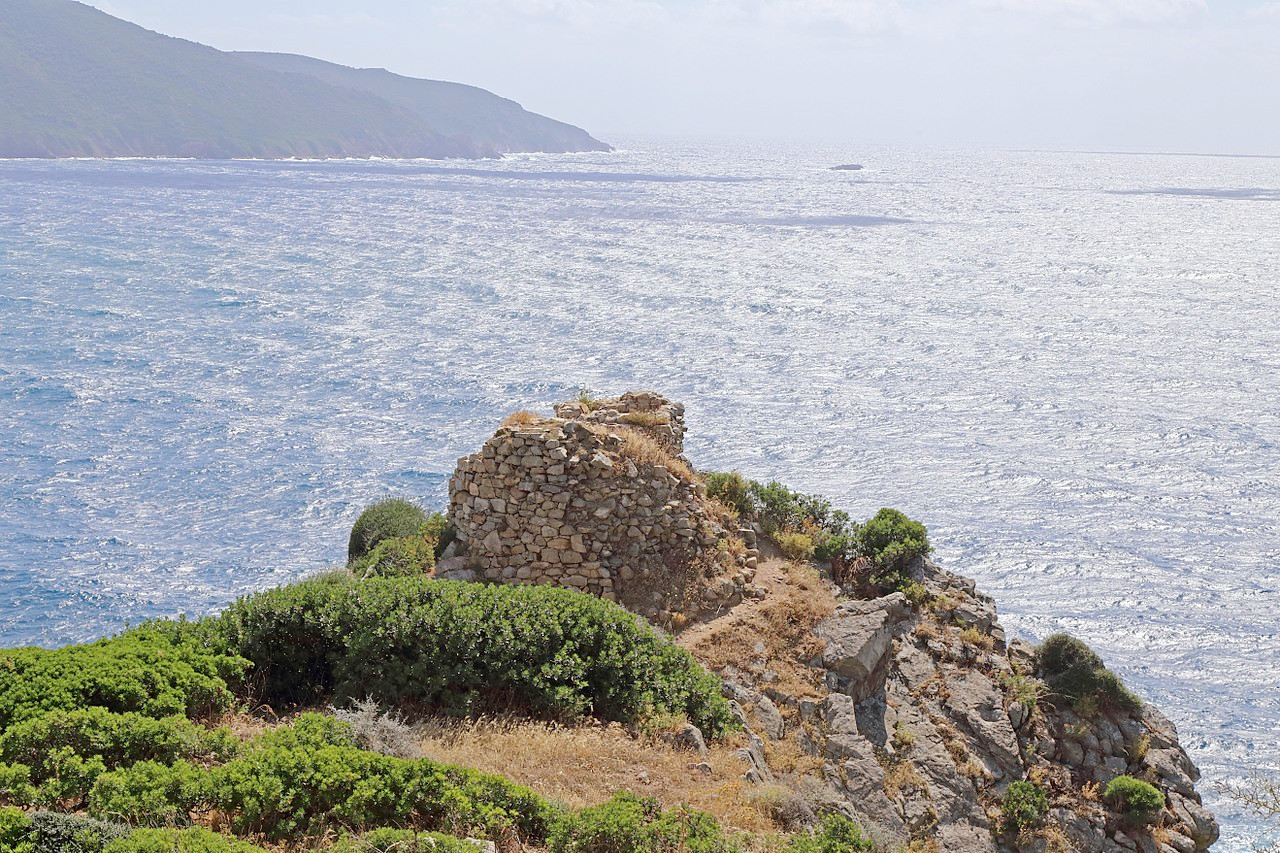 Ruins of the Tour de Pelusella
Ruins of the Tour de Pelusella
The official websites
Corsica
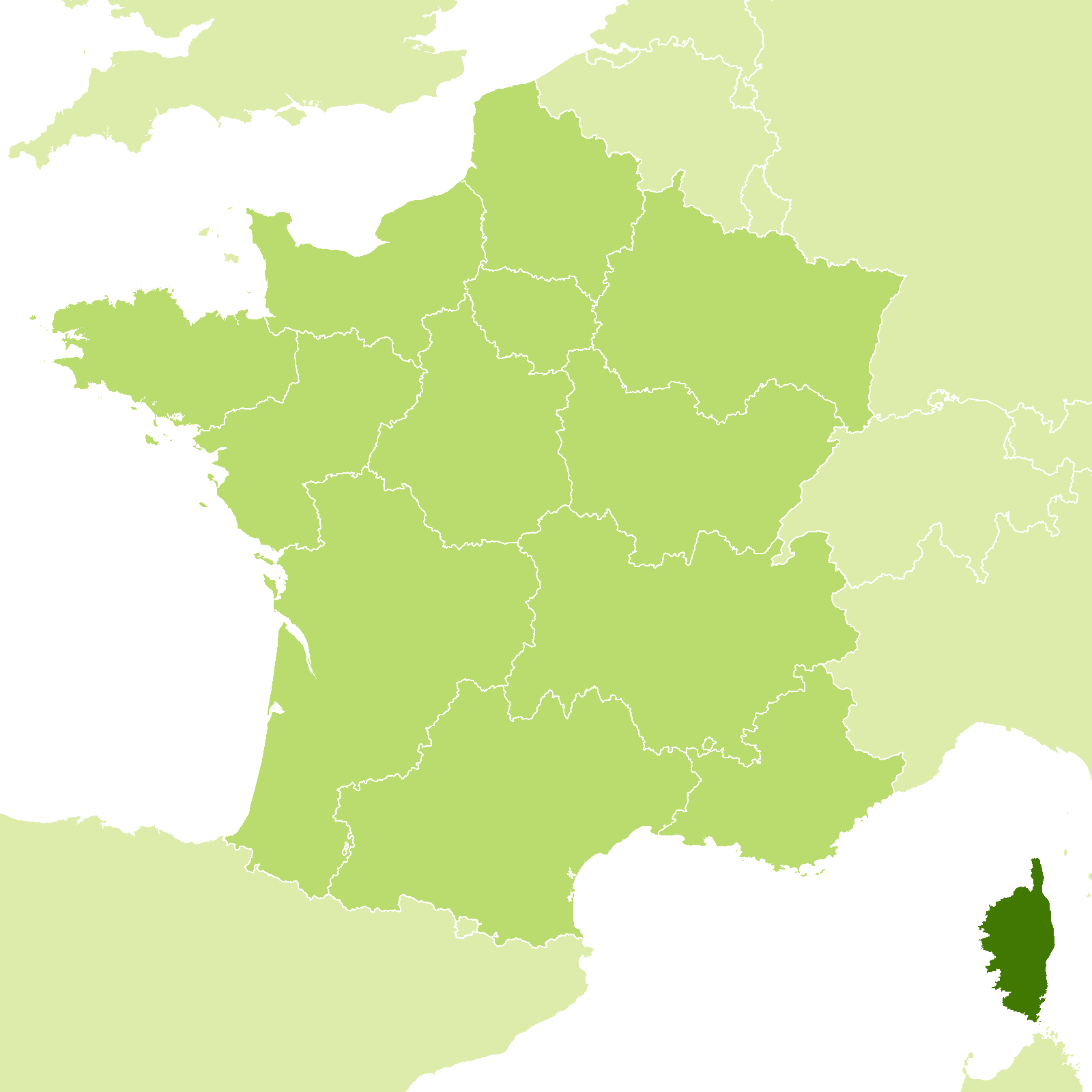
The jewel of the Mediterranean
| Location: | In the Mediterranean Sea, southeast of France |
| Coordinates: | 42° 15′ N, 9° 00′ E |
| Size: | • 185 km N-S; 85 km E-W • 115 miles N-S; 50 miles E-W |
| Terrain: | A mountainous island with some plains in the east |
| Climate: | Hot and dry summers with sea breezes. Mild winters |
| Highest point: | Monte Cinto 2,706 m / 8,878 ft |
| Forest: | 61% (2010 est.) (source) |
| Population: | 340,440 (2019) |
| Population density: | Low (39/km²) |
| Capital: | Ajaccio |
| Languages: | French; Corsican |
| Human Development Index: | Very High (0.858) |
